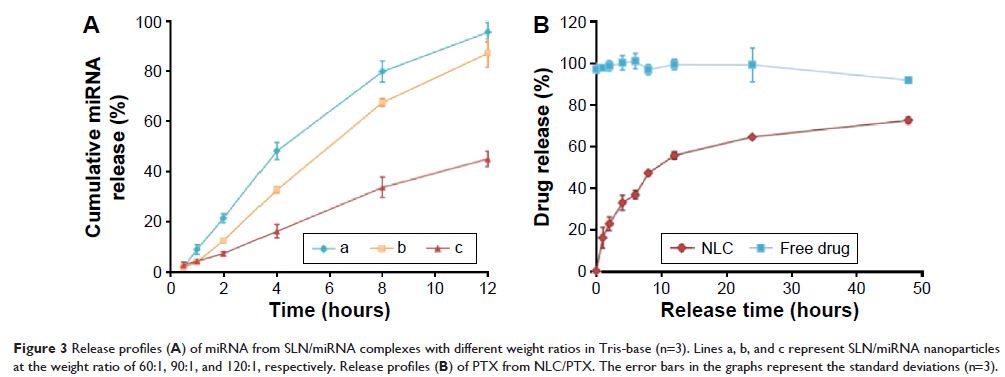108384
论文已发表
注册即可获取德孚的最新动态
IF 收录期刊
- 3.4 Breast Cancer (Dove Med Press)
- 3.2 Clin Epidemiol
- 2.6 Cancer Manag Res
- 2.9 Infect Drug Resist
- 3.7 Clin Interv Aging
- 5.1 Drug Des Dev Ther
- 3.1 Int J Chronic Obstr
- 6.6 Int J Nanomed
- 2.6 Int J Women's Health
- 2.9 Neuropsych Dis Treat
- 2.8 OncoTargets Ther
- 2.0 Patient Prefer Adher
- 2.2 Ther Clin Risk Manag
- 2.5 J Pain Res
- 3.0 Diabet Metab Synd Ob
- 3.2 Psychol Res Behav Ma
- 3.4 Nat Sci Sleep
- 1.8 Pharmgenomics Pers Med
- 2.0 Risk Manag Healthc Policy
- 4.1 J Inflamm Res
- 2.0 Int J Gen Med
- 3.4 J Hepatocell Carcinoma
- 3.0 J Asthma Allergy
- 2.2 Clin Cosmet Investig Dermatol
- 2.4 J Multidiscip Healthc

由固体脂质纳米颗粒递送的微小 RNA-200c 可增强紫杉醇 (Paclitaxel) 对乳腺癌干细胞的功效
Authors Liu J, Meng T, Yuan M, Wen LJ, Cheng BL, Liu N, Huang X, Hong Y, Yuan H, Hu FQ
Received 28 April 2016
Accepted for publication 11 July 2016
Published 12 December 2016 Volume 2016:11 Pages 6713—6725
DOI https://doi.org/10.2147/IJN.S111647
Checked for plagiarism Yes
Review by Single-blind
Peer reviewers approved by Dr Lakshmi Kiran Chelluri
Peer reviewer comments 3
Editor who approved publication: Dr Lei Yang
Background: One of the major obstacles in the treatment of breast cancer is breast
cancer stem cells (BCSC) which are resistant to standard chemotherapeutic
drugs. It has been proven that microRNA-200c (miR-200c) can restore sensitivity
to microtubule-targeting chemotherapeutic drugs by reducing the expression of
class III β-tubulin. In this study, combination therapy with miR-200c and
paclitaxel (PTX) mediated by lipid nanoparticles was investigated as an
alternative strategy against BCSC.
Materials and
methods: A cationic lipid 1,2-dioleoyl-3-trimethylammonium-propane was
strategically selected to formulate solid lipid nanoparticles (SLN) for
miR-200c delivery. Nanostructured lipid carriers (NLC) with 20 wt% oleic acid
were prepared for PTX delivery. Mammospheres, which gained the characteristics
of BCSC, were used as a cell model to evaluate the efficiency of combination
therapy.
Results: The cationic SLN could condense anionic miRNA to form SLN/miRNA
complexes via charge interactions and could protect miRNA from degradation by
ribonuclease. SLN/miR-200c complexes achieved 11.6-fold expression of miR-200c
after incubation for 24 hours, compared with that of Lipofectamine™
2000/miR-200c complexes (*P <0.05).
Intracellular drug release assay proved that miRNA can be released from
SLN/miRNA complexes efficiently in 12 hours after cellular uptake. After BCSC
were transfected with SLN/miR-200c, the expression of class III β-tubulin was
effectively downregulated and the cellular cytotoxicity of PTX-loaded NLC
(NLC/PTX) against BCSC was enhanced significantly (**P <0.01).
Conclusion: The results indicated that the cationic SLN could serve as a promising
carrier for miRNA delivery. In addition, the combination therapy of miR-200c
and PTX revealed a novel therapeutic strategy for the treatment of BCSC.
Keywords: breast cancer stem cells, microRNA-200c, paclitaxel, solid lipid
nanoparticles, nanostructured lipid carriers, combination therapy
